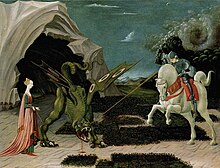Palais Lanckoroński


The Palais Lanckoroński was a
History

The noble Lanckoroński family,
With the
Adolf Hitler decreed that all works confiscated in Austria should remain within the country, although items purchased could be exported. This measure was introduced as a result of the acquisition by Reichsmarschall Hermann Göring of two paintings from the Lanckoroński collection. Göring kept the pictures despite an order from Hitler to return them; nevertheless, the decree prevented the loss of the majority of Austria's works of art beyond its borders.[1]
Many art objects were brought to
. The surviving art collection is scattered among various museums and private collections.Lanckoroński Collection



Many of the objects in the collection originally came from the Royal Castle in Warsaw. They consisted of a large number of paintings which hung in the "Gallery of Stanisław August", named after King
.Paintings in the Royal Castle, Warsaw
Paintings from the collection formerly housed in Vienna, today in the Royal Castle in Warsaw, include:[4]
- Adriaen van Ostade, The Smoker and the Drunkard
- Anton von Maron, The Brothers Franciszek and Kazimierz Rzewuski with Roman Buildings in the Background
- David Teniers the Younger, Country Doctor
- Rembrandt van Rijn, The Scholar at the Lectern (known as The Father of the Jewish Bride) and The Girl in a Picture Frame (known as The Jewish Bride),[4]
other pieces are by
Paintings in the Wawel Royal Castle, Kraków
82 works from the Lanckoroński collection that were donated by the heiress Countess Karolina Lanckorońska are now in Kraków. These include works by Simone Martini, Bernard Daddi, Bartolo di Fredi, Apollonius di Giovanni, Jacopo del Sellaio, Vittore Crivella, Dosso Dossi, Garofalo.:[5]
- Saint Augustine
- Niccolo di Tommaso, Madonna and Child with Saints and Angels
- Simone Martini, Angel
- Bernardo Daddi, Enthroned Madonna and Child
- Sano di Pietro, Madonna
- Madonna and Child
- Dosso Dossi, Jupiter, Mercury and Virtue (Donated by Dr. Anton Lanckoronski to the Kunsthistorisches Museum in Vienna. The piece was restituted to the heir in 2000, and then given to the Wawel Museum)[6]
Paintings in the Österreichische Galerie
Pieces in the Österreichische Galerie Belvedere in Vienna include:[6]
- Heinrich Angeli, Margarethe Gräfin Lanckoronska
- Carl von Blaas, Leonie Gräfin Lanckoronska, geb. Gräfin Potocka, mit ihrem Sohn Karl
Rudolf von Alt paintings
The realist painter Rudolf von Alt met Count Lanckoronski in Nuremberg on August 29, 1881. In the autumn of that year, he executed a series of ten interiors of the Count’s apartments. The paintings sometimes get confused as being interior depictions of the count's Palais at Jacquingasse. The paintings, however, are of his former residence at Riemergasse 8, in Vienna's Innere Stadt.[7][8]
The watercolour series represent various rooms decorated with paintings and sculptures of the 17th and 18th century. In some, the Count can be seen sitting in one of the armchairs, reading a book. Using a refined technique, von Alt very precisely depicted all works of art, which are easy to identify. For example, the bust of
-
The morning room in the Lanckoronski apartments, painted by Rudolf von Alt
-
One of the drawing rooms
-
The library
-
The office of the count
References
- ISBN 978-1-56649-253-9.
- ^ "Historia dwóch obrazów". Zamek Królewski w Warszawie - Pomnik Historii i Kultury Narodowej. Archived from the original on 2011-07-27. Retrieved 2008-10-16.
- ISBN 978-3-8258-7754-5.
- ^ a b "Galeria Lanckorońskich". Zamek Królewski w Warszawie - Pomnik Historii i Kultury Narodowej. Archived from the original on 2010-06-27. Retrieved 2008-10-16.
- ^ Janczyk, Agnieszka; Kazimierz Kuczman; Joanna Winiewicz-Wolska. "Collections » Painting". Wawel Royal Castle. Archived from the original on 2007-09-27. Retrieved 2008-10-16.
- ^ a b Elisabeth Gehrer (February 17, 1999). "5184/AB (XX. GP)". Schriftliche Beantwortung (gem. § 91 (4) GOG). Parlamentsdirektion. Archived from the original on August 3, 2012. Retrieved 2008-10-16.
- ^ Hevesi, Ludwig; Kuzmany, Karl M. (1911). Rudolf Alt - Sein Leben und sein Werk. Vienna. p. 77.
{{cite book}}: CS1 maint: location missing publisher (link) - ISBN 978-3-7017-0138-4.
- ISBN 978-3-922608-45-5.)
{{cite book}}: CS1 maint: location missing publisher (link
Sources
- Mieczyslaw Paszkiewicz. Jacek Malczewski in Asia Minor and Rozdol: The Lanckoroński Foundation. Polish Library (1972). ASIN B00154PE5Q
- Karolina Lanckoronska. Those Who Trespass Against Us: One Woman's War Against the Nazis. Da Capo Press. 2007. ISBN 0-306-81537-0
External links
- Warsaw Royal Castle | The Lanckoroński Gallery
- Wawel Royal Castle | Furniture Restoration Workshop on Lanckoroński art work
- Wawel Royal Castle | Archives of Lanckoroński memorabilia




